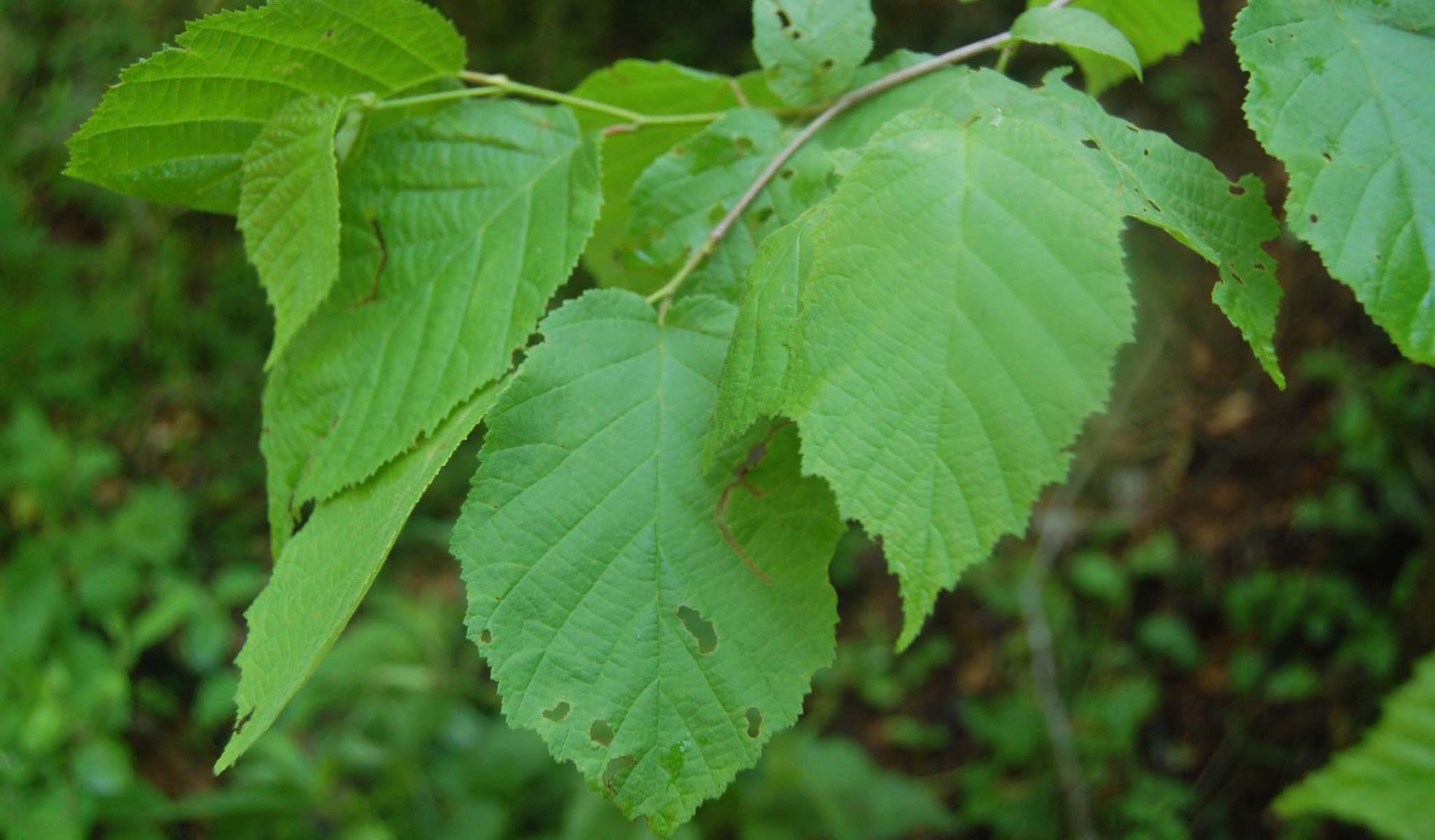American Hazelnut

Common Name:
American HazelnutBotanical Name:
Corylus americanaFamily:
BetulaceaeZone:
4-8Height:
5-10'Spread:
4-8'Bloom Time:
April, February, MarchBloom Description:
Yellow-green catkins (male) droop in pairs or in threes off of twigs, while the reddish-purple stigmas (female) bloom from the axil buds.Trail/Garden Location:
Crystal Spring Loop, North Forest TrailGarden Uses:
American Hazelnuts have a multi-stemmed habit that colonizes when given the right conditions (part-sun to shade with moist to dry soil), so give this shrub some room if you don't want the maintenance. A great choice for nut production if you want to compete with small mammals!Wildlife Benefits:
The nuts are consumed by small mammals, gamebirds, and deer.Leaf Type:
The jagged, oval leaves have prominent veins and appear alternately arranged and covered with a rough down.Further Information:
USES OF HAZELNUT TRANSCRIPT
NARRATOR: The tasty nuts of this modest native tree were a food for many Native Americans and early European settlers to the Ozarks. Ethnobotanist, Justin Nolan, describes the preparation of these nuts for food and their uses in traditional medicine.
JUSTIN NOLAN: American hazelnut or Corylus Americana is a native, sun-loving, nut-bearing relative of the alders and the birches. Taller than shrubs, but somewhat smaller than trees, hazels were popularized by the advent of the American orchard farming industry last century. Though historically, they provided valuable food and medicine for the Cherokees, Ponca, the Omaha and others. Once cracked, the tender inner kernels can be eaten fresh, but traditionally they were crushed, boiled, roasted, and then mixed with beans and cornbread to render a tasty high-calorie porridge. Honey, when available, was combined with the nut meat to enhance their flavor and appeal. Interestingly, teas prepared from the inner bark of the American hazelnut are widely cited in Native medical botanical studies as effective cures against vomiting, diarrhea, and cramps. The Iroquois and others also consume the nuts to combat allergies, to fight seasonal hay fever, and to promote prenatal strength.
